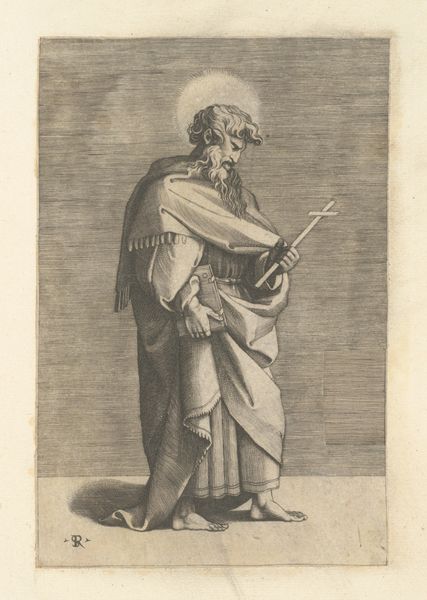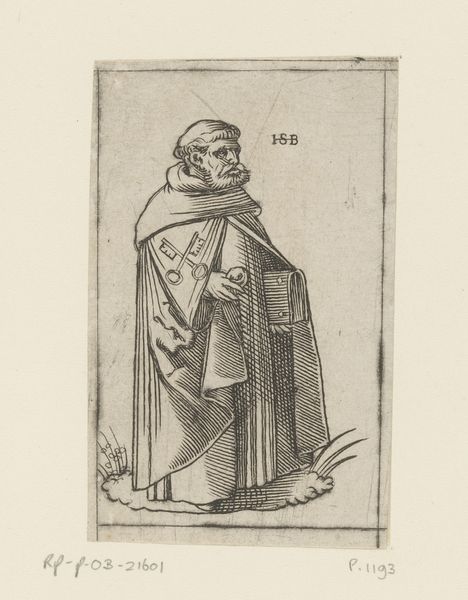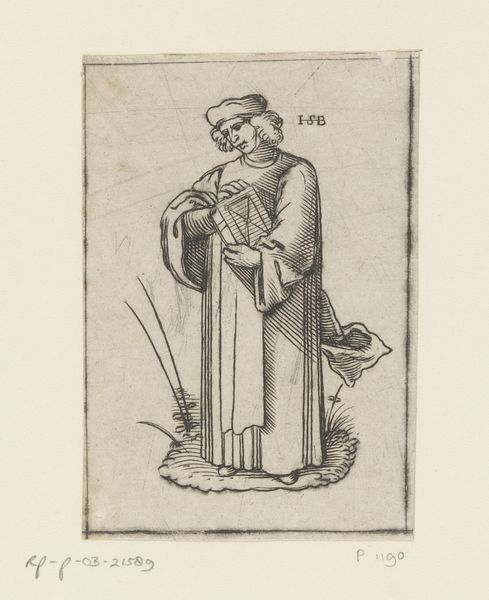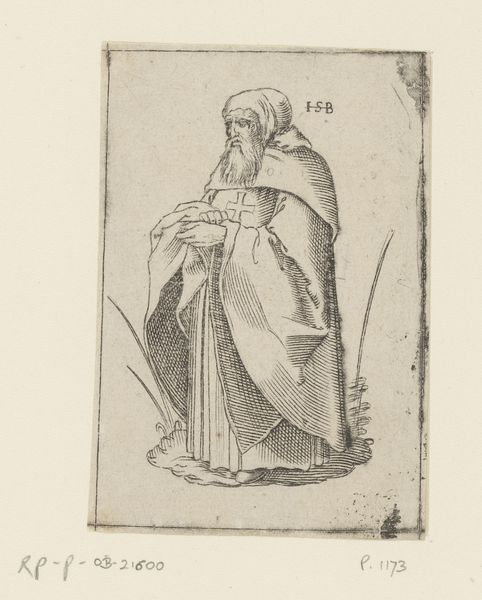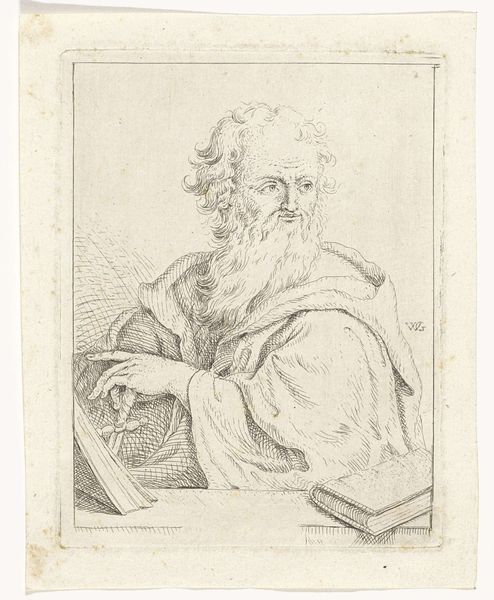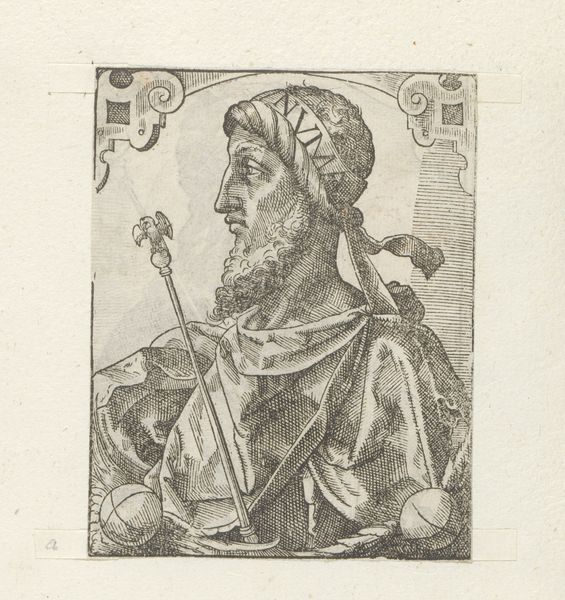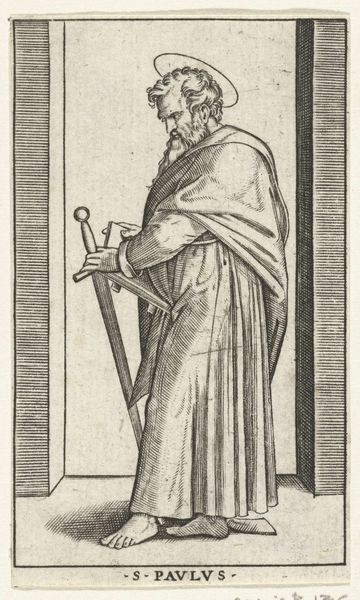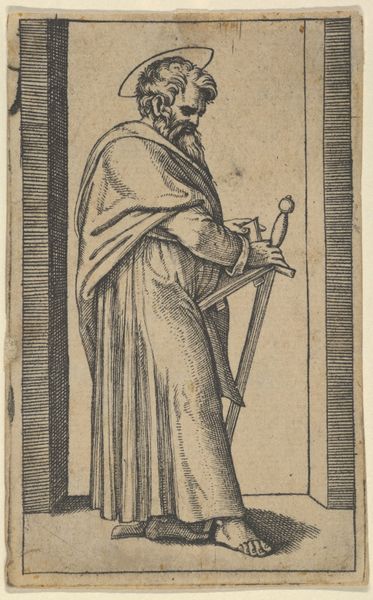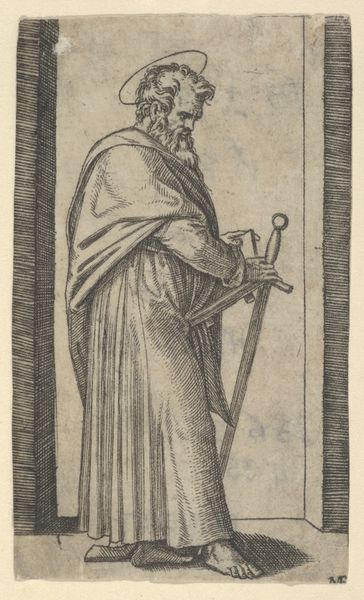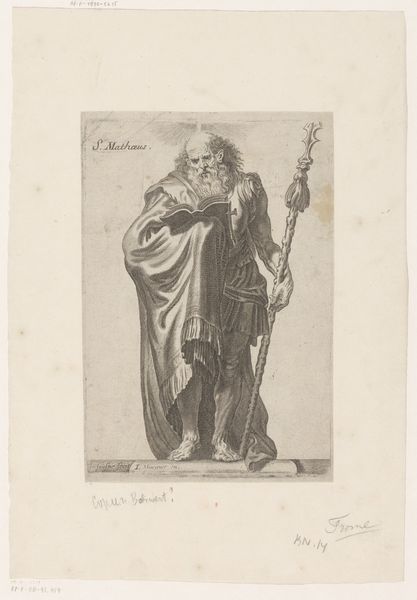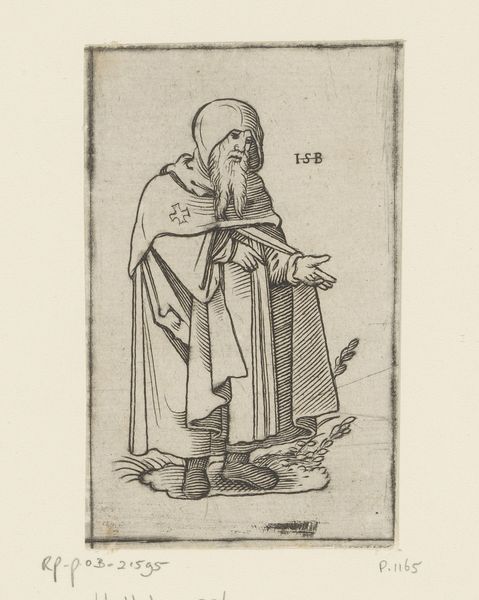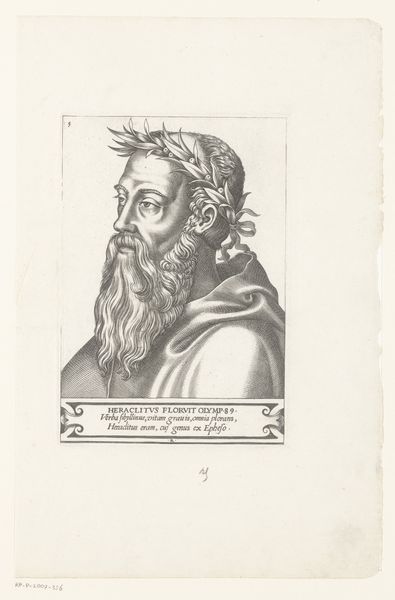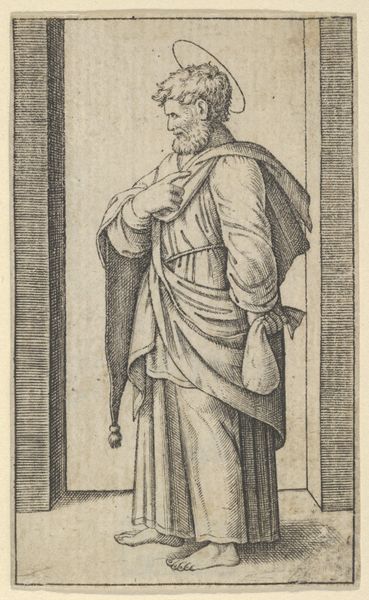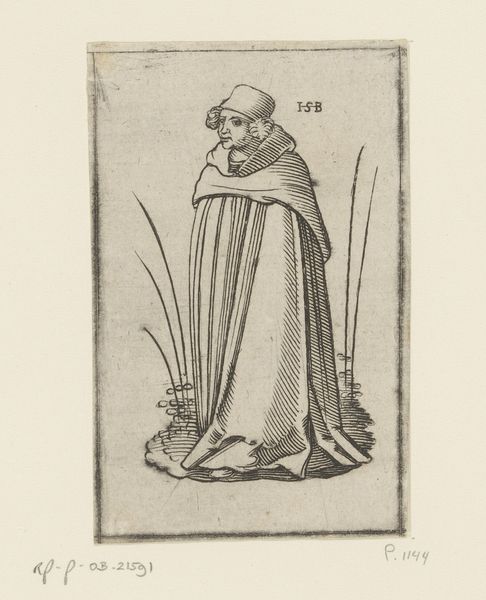
print, engraving
#
portrait
#
medieval
# print
#
old engraving style
#
figuration
#
engraving
Dimensions: height 95 mm, width 64 mm
Copyright: Rijks Museum: Open Domain
Editor: This engraving, "Monnik van de orde van het Dal van Josafat," or "Monk of the Order of the Valley of Josaphat," created after 1526 by an anonymous artist, is really striking in its simplicity. The lines are so clean and create such a somber and almost lonely mood. What do you see in this piece, looking at it from your perspective? Curator: I see this work as an entry point into understanding the complex relationship between religious orders and social power structures in the early 16th century. Who did these orders serve? What role did they play in the lives of ordinary people, and conversely, what was their accountability to the poor and vulnerable? The deliberate, perhaps devotional, act of creating a print, a relatively accessible medium, adds another layer. Why disseminate this image, and to what end? Editor: That's a fascinating point. I was so focused on the aesthetic of the engraving, the visual and emotional impact, that I hadn't really considered its purpose within the wider societal context. Curator: Think about the symbolism of the habit, for instance. While it represents piety and renunciation, it also denotes membership and belonging to an organization wielding significant influence. The valley of Josaphat itself carries eschatological weight. The signature of the anonymous artist 'I.S.B', while hiding their identity, may serve as a comment or social protest in the very act of concealing authorship. Considering these aspects changes the way we look at what may initially seem to be just a portrait, right? Editor: Absolutely, it definitely challenges a superficial read of the piece, highlighting how an image like this might engage with then-contemporary political and religious ideas. Curator: Precisely. The act of looking becomes an act of questioning the power dynamics at play and exploring alternative narratives around the agency, or lack thereof, of religious figures in a rapidly changing world. Editor: This has completely shifted my perception. It's amazing how much historical and cultural context is embedded in this single image! Curator: Indeed! Now, whenever we engage with such works, we can use this perspective as a starting point. Remember to situate these images in the contexts of then and now, prompting broader social inquiry.
Comments
No comments
Be the first to comment and join the conversation on the ultimate creative platform.
